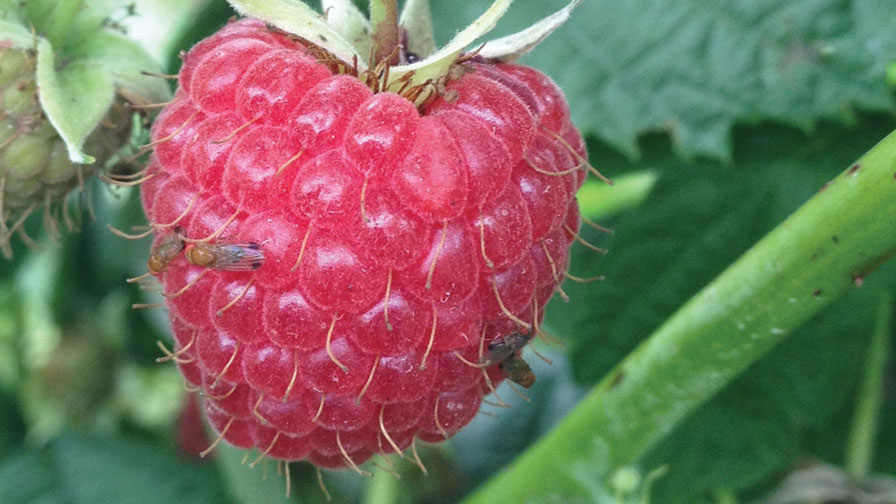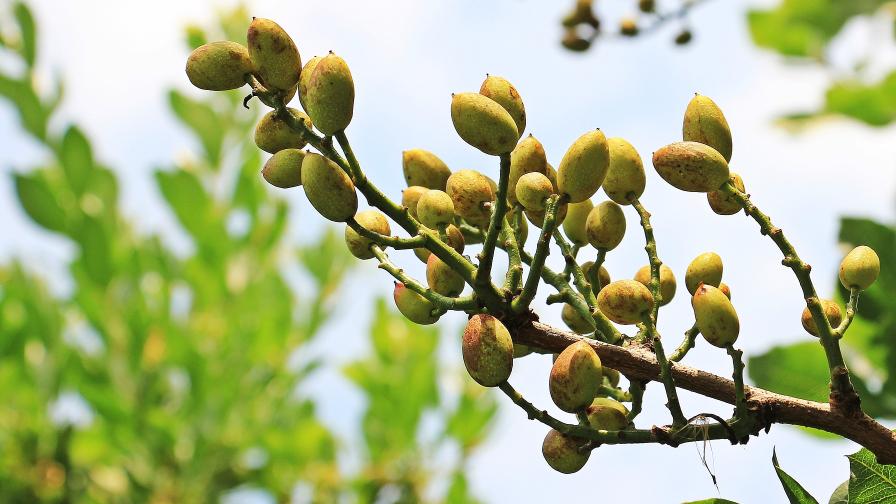Scientists Go for the Gut to Help Defeat Fruit Flies

Can the key to managing fruit fly pests like spotted wing drosophila lie in the insect’s microbiome? Researchers are looking into it. (Photo Credit: Hannah Burrack)
No matter the location or species, fruit flies are a menace – especially to farmers. An international team of researchers is now on the case and endeavoring on a three-year project that involves two of the winged pest’s most notorious: spotted wing drosophila and the Mediterranean fruit fly. This all thanks to a $310,000 grant from the U.S.-Israel Binational Agricultural Research & Development Fund.
Adam Wong, an Assistant Professor in the UF/IFAS Department of Entomology and Nematology, is leading one group with several fellow University of Florida scientists in the fight against spotted wing drosophila. Their counterparts at Hebrew University in Israel, Edouard Jurkevitch and Boaz Yuval, are taking on the Mediterranean fruit fly.
“The motivation behind the project was to help develop a sustainable strategy to manage fruit fly pests,” Wong said. “Growers are relying on spraying insecticides, but it’s not a sustainable way to control the pest. We want to develop something that can help them in the long term.”
Wong said the goal is to identify how the insects’ gut bacteria, or microbiome, helps the pest invade and spread.
“Our first objective is to understand how these insects’ microbiome helps the larvae develop in fruits,” Wong said. The method, he explains, involves a state-of-the-art process to sequence the flies’ RNA. “If we can identify some genes or microbial species in the fly that are vital for development, then we can try targeting them to combat or prevent infestations.”
According to Wong, another objective would identify microbes that can attract or repel the pest, and to use that information to develop an attractant to lure flies to a trap, or a repellent that would keep the flies from entering a field.
One method that Wong’s team has already been testing is manipulating the flies’ microbiome, such as making them “germ-free,” an intervention process that occurs before they hatch. Each egg’s surface is naturally coated with microbes that pass from mothers to the offspring as the larvae hatch and consume their shells. By cleansing the shells of this microbiome and then placing them in a sterile environment, the Wong lab is able to identify the roles microbes play in fruit fly physiology.
“Accumulating evidence from our lab and others has shown that the larvae failed to develop in fruits without the microbiome,” Wong said. “Finding ways to disrupt the microbial community could be a novel strategy for managing this pest. We may not be able to kill off every fly, but even suppressing their population so that they can gradually become less competitive or less established in an environment would still be very useful.”









